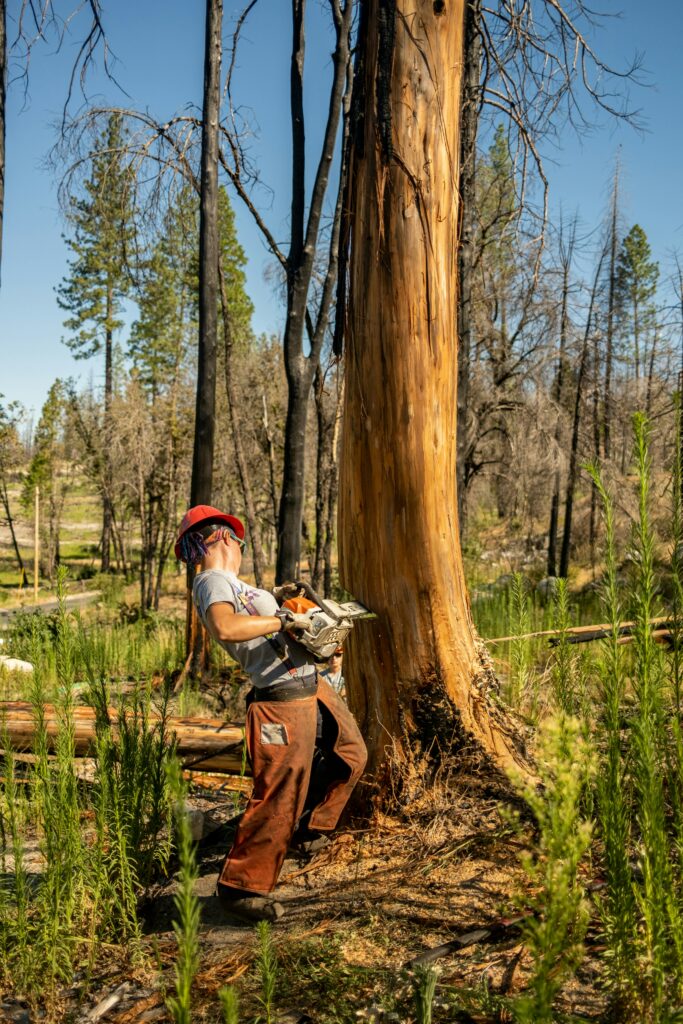
I recently had a conversation with two of my friends who are engineers here in Vernon. As I shared my curiosity with them about Artificial Intelligence, they suggested I connect with their brother in the U.K. to discuss the topic. They said he was a bit of an expert on the topic, and they weren’t kidding.
On October 9th, I was connected with Patrick Murray on a Zoom meeting. Patrick has an interesting background of experience, working initially as a nuclear design engineer and currently working in data analytics and Ai. Patrick is Head of Strategy and Data at Razor, and helps “support clients in driving innovation and empowering their workforce.”
I was most curious about how he uses artificial intelligence, how he sees it as a potential valuable tool for the future generation, and specifically, what skills and tools he views as important. Here is a summary of our conversation:

Data Manufacturing
Image by Homa Applicances from Unsplash
Topic: Could you please share what you can about how you got into the work you do, what it is you do to help people use Ai to enhance their workplace?
Patrick responded by sharing his experience in nuclear design, which was interesting to him and gave him experience, but that he remarked was “slow.” He went on to share that his interests guided him to artificial intelligence and data collection. Now, he works for a company that helps maximize efficiency from an operations standpoint. This “data driven manufacturing” is helping people in, “Making more stuff in an efficient way. Help extract and centralize that data, to give operators and managers a complete view of what’s happening on their shop floor to see what’s happening on their floor.” (P. Murray, personal communication, October 9, 2024) He also works in textile manufacturing, making sure materials don’t have defects. Ai is good at pattern recognition and that’s why it’s a good tool in analyzing manufacturing efficiency.

Ai in Education
Image by David Pennington on Unsplash
Topic: How do you see AI and data analytics transforming industries beyond tech, such as education? How important do you think it is that students in highschool (in a more senior level) be introduced into Ai skills?
Patrick spoke to the application of using generative Ai in a course his company recently put on. The Ai helped to create a draft, taking a two to three week process into a two to three day process. In addition to the activity saving time, it also provided adaptations for an adult with dyslexia in tailoring the content to their specific needs. This can be viewed as an opportunity in the world for personalized learning to take place, and tailoring education without massive amounts of time or money. I believe this has huge capacity in our education system to help our divergent learners in applying their individualized education plans in the classroom. Teachers have high numbers of students in their classrooms, and differentiated instruction is a complex and challenging skill that takes both time and teacher experience to apply. I believe that artificial intelligence tools can help teachers to create adaptations in a more efficient way. I also believe it has the potential to put those adaptations in the hands of the learner, which will lead to more self advocacy, self understanding and self confidence in the learner.
Patrick and I also spoke about the challenges that educators are facing right now with the unregulated use of artificial intelligence tools like Chat GPT, saying:
“There’s a real challenge for educators in schools to provide coursework and assignments that people aren’t just going to stick into Chat GPT and get an answer from. …This kind of tooling has become so ubiquitous, I mean I use it every single day at work, and it helps me a lot. I think it would be wrong to prevent students from learning, getting the experience of how to use this kind of technology, but it would have to be for assignments and coursework where they’re finding it enriching in other ways.”
(P. Murray, personal communication, October 9, 2024)
Patrick goes on to explain that there are many perspectives on what artificial intelligence is and many misconceptions. Although it’s becoming more human-like in its existence, artificial intelligence is just a tool. It’s important for students to understand how Ai and Chat GPT function as tools. He said it’s a strong brainstorming tool, but future users need a base level of understanding of the technology behind it.

Technology Optimist
Image by Belinda Flewings on Unsplash
Topic: Given your experience in nuclear engineering and data analytics, what advice would you give to students about pursuing diverse fields and then merging them with AI? What direction would you say is an ‘insulated’ career that students could direct their efforts towards?
I really appreciated Patrick’s response to this question. He highlights that we still need students to have knowledge base, skills, and trades. The sense I get from educators and the public is that they are fearful that artificial intelligence is going to lead to a complete dismantling of skill acquisition in education. Patrick’s response helped me discover that we aren’t looking at a dissolution of acquiring skills and knowledge, but rather shifting the skills to be used in a different way. Using his experience of engineering, the problem-solving skills he developed helped him to adapt later in other career paths. “Think about the skills that you’re learning, and that opens up so many more windows.” Taking a life-long learning approach is what Patrick suggests. This speaks to the importance of our student’s “soft skills” and the core and curricular competencies in the British Columbia curriculum. Patrick goes on to contextualize Ai in the workforce and gives his perspective on its integration:
“Ai is going to disrupt industries. But I am consider myself a technology optimist and I don’t subscribe to the same view that it’s going to come in now and replace everything. I have still yet to see a piece of Ai generated art that’s moved me, in any realistic way. But where I think Ai sings, and is really a benefit, is when you combine it with a human that has the creativity, that has the ability to see the shades of grey in the world, Ai is really good at finding patterns but it sees the world in black and white. And I think you need that human to round it out. Industries are going to change, but I don’t see it coming and sweeping everything to one side.”
(P. Murray, personal communication, October 9, 2024)

Tech Toolbox
Image by Markus Spiske on Unsplash
Topic: What key skills do you believe students should learn early on to effectively understand and work with AI?
Patrick highlighted several key skills that I will apply to my Artificial Intelligence Course. I thought it easiest to see these skills in a list:
- “Do something with the data, and plot it out, find the signal in the noise
- Understanding the data
- Understanding the problem
- Architect a solution
- Apply the Ai in an effective way
- Problem solving
- Communication
- Tell that story
- Understanding the limitations, knowing when to use it and when not to”
- (P. Murray, personal communication, October 9, 2024)
- What AI tools or projects would you recommend for high school students to gain hands-on experience with machine learning or natural language processing?
I am glad I asked this question. I don’t have a huge knowledge base of what specific Ai tools to include in my course and this gives me relevancy and a jumping-off point for which tools to eventually explore with students:
- “Python
- Pandas
- Data science
- Toolboxes
- Machine learning libraries“
Projects:
- Great data sets
- Data science website
- Passion projects
- Interest – based – personalized learning
- Semantic learning
- Why do kids hate school – this concept of thinking / problem / curious
Although Patrick is not an educator in schools, he does educate business owners and colleagues on Artificial Intelligence, and his experience reflects a wide breadth of knowledge on the topic. Patrick speaks to the importance of students tapping into their passions and interests; reiterating the importance of personalized learning and the potential for Ai to assist in project-based learning. Speaking to his own personal experience in his passion for football, Patrick expresses that these technological skills can grow organically from curiosity.
References:
Patrick. (n.d.). Patrick – Head of Data, Analytics and AI at Razor. LinkedIn. https://www.linkedin.com/in/patrickrazor/?trk=people-guest_people_search-card&originalSubdomain=uk





Recent Comments